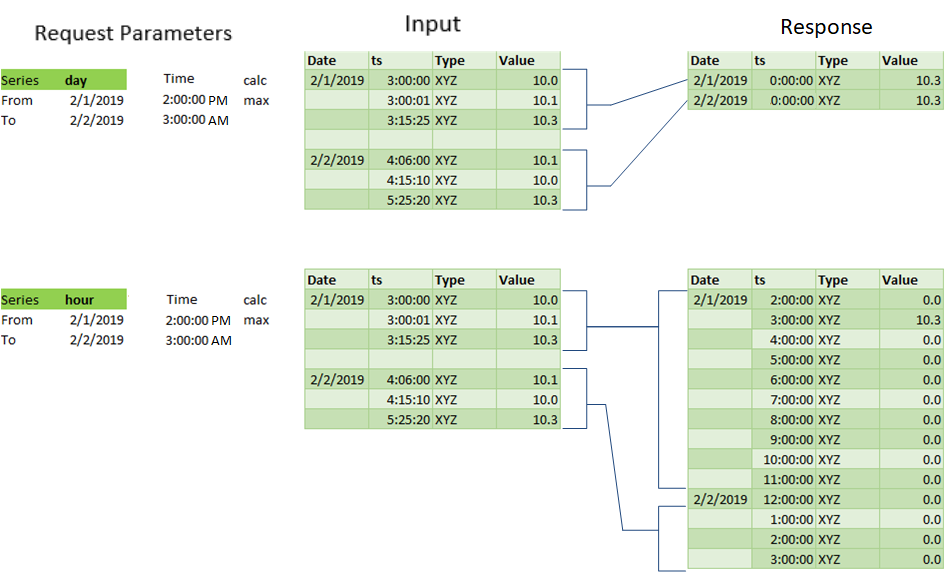Data aggregation is the process where raw data is collected, consolidated, and expressed in a summary form for statistical analysis. For example, data collected every minutes is aggregated into a value for an hour, data collected on an hourly basis is aggregated into a value for the day, and so on. Data aggregation allows patterns in the data to emerge, and these patterns acts as the basis for data analysis and decision making.
Aggregation is frequently called summarization, and aggregate data is called summary data. While the most frequently used aggregation operator is Sum, there are many other operators, such as Average, Minimum, Maximum, and Count. deviceWISE Cloud also supports Weighted Average and Non-zero time weighted average. Following are all the data aggregation supported by the deviceWISE Cloud:
| deviceWISE Cloud Aggregations | API notations (counter.count and property.aggregate | Description |
|---|---|---|
| Average | avg | The average of the data values found within the specified time period.
The avg calculation is determined
by taking the sum of all publishes during the time
period divided by the number of publishes during
that period.
|
| Weighted average | wavg | The time weighted average
of the data values found within the specified
time period. The wavg calculation
is determined by weighting each publish for the
number of minutes that it is the current value in
the time period.
|
| Non-zero time weighted average | nzwavg | The non-zero time
weighted average of the data values found
within the specified time
period. The nzwavg calculation is
determined similarly to the wavg, except that
instead of weighting across the entire time period
in the series (1 hour or 1 day), it is calculated
against the time in the period the value was
non-zero.
|
| Sum | sum | The sum of the data values found within the specified time period. |
| Minimum | min | The minimum data value found within the specified time period. |
| Maximum | max | The maximum data value found within the specified time period. |
| Count | count | The count of the data values within the specified time period. |
deviceWISE Cloud collects data in specific time intervals and presents the data within the context of those intervals. The property.aggregate slices the intervals into hour or day and the counter.count slices the interval into hour, day, 15 minute, 5 minute and total. You must use the proper time interval series to get the desired aggregate results.
Note that data published using data aggregation APIs require them to be published in order.
The below example explains the series that needs to be used in property.aggregate and counter.count API calls:
The first table below returns the sum for the entire day, since series is set to day. If you want to return the results only between 2:00:00 and 3:00:00 you need to set the series to hour instead of day. Other possible options for series includes 15min, 5min, or total.
